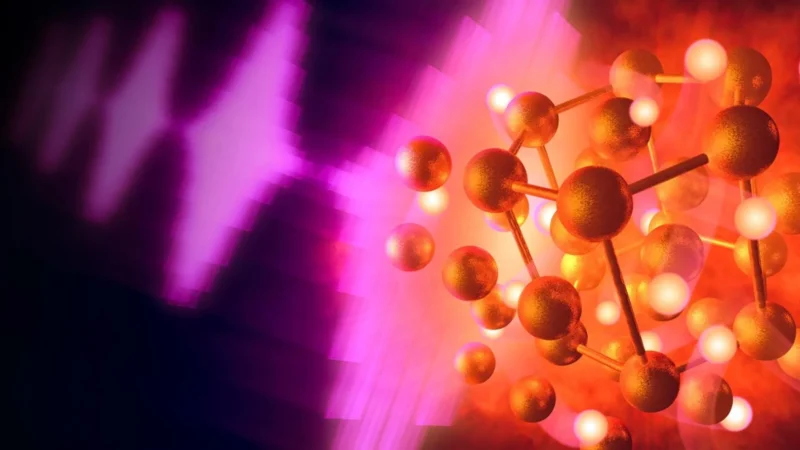Fast Facts
-
Discovery of Gold Hydride: For the first time, an international research team led by SLAC scientists formed solid binary gold hydride, revealing unexpected chemical reactions under extreme pressure and temperature conditions.
-
Extreme Experimentation: The researchers used a diamond anvil cell to create conditions exceeding Earth’s mantle pressure and heated samples to over 3,500°F, leading to diamond formation alongside the novel gold hydride.
-
Insights on Superionic Hydrogen: The study demonstrated that hydrogen can exist in a dense, “superionic” state within the gold lattice, enhancing conductivity and allowing for a better understanding of its behavior under extreme conditions.
-
Implications for Future Research: This breakthrough opens avenues for exploring new chemistry and potentially understanding dense hydrogen in planetary interiors and nuclear fusion processes, suggesting much more chemistry awaits discovery at extreme conditions.
Unexpected Discoveries in Extreme Chemistry
Recent research at the SLAC National Accelerator Laboratory provides a remarkable glimpse into the unexpected world of chemistry under extreme conditions. An international team, while focused on diamond formation from hydrocarbons, accidentally discovered solid binary gold hydride, a compound composed of only gold and hydrogen atoms. This finding challenges the long-held perception of gold as a chemically inert metal. Researchers subjected hydrocarbon samples to pressures exceeding those found in Earth’s mantle and temperatures over 3,500 degrees Fahrenheit. Using advanced X-ray technology, they observed not only the anticipated diamond structures but also signals indicating the formation of gold hydride.
These observations mark a significant turning point. They suggest that under extreme pressure and temperature, the rules of chemistry that we know may not apply. Instead, scientists might reveal entirely new compounds. Mungo Frost, a leading researcher in this study, emphasized that despite gold’s reputation for being unreactive, its behavior changes dramatically under severe conditions. This revelation opens pathways for further exploration in previously inaccessible realms of chemistry.
Implications for Science and Technology
The implications of this discovery extend far beyond the laboratory. Studying gold hydride could enhance our understanding of dense hydrogen environments found within certain planets and stars. This knowledge may also yield insights into essential processes like nuclear fusion, which powers both stars and has the potential for energy generation on Earth. The ability to create and study compounds like gold hydride allows scientists to simulate conditions that mirror the interiors of celestial bodies, potentially unlocking secrets about the universe.
Furthermore, this research may spur the development of new technologies based on our newfound understanding of materials under extreme conditions. As scientists refine simulations and modeling techniques, they will likely uncover more exotic materials and their properties. The exploration of these high-pressure, high-temperature environments promises not only to deepen our grasp of fundamental chemistry but also to contribute to advancements in numerous scientific fields. Through this serendipitous discovery, we catch a glimpse of our future in energy, materials science, and beyond.
Stay Ahead with the Latest Tech Trends
Explore the future of technology with our detailed insights on Artificial Intelligence.
Stay inspired by the vast knowledge available on Wikipedia.
TechV1

